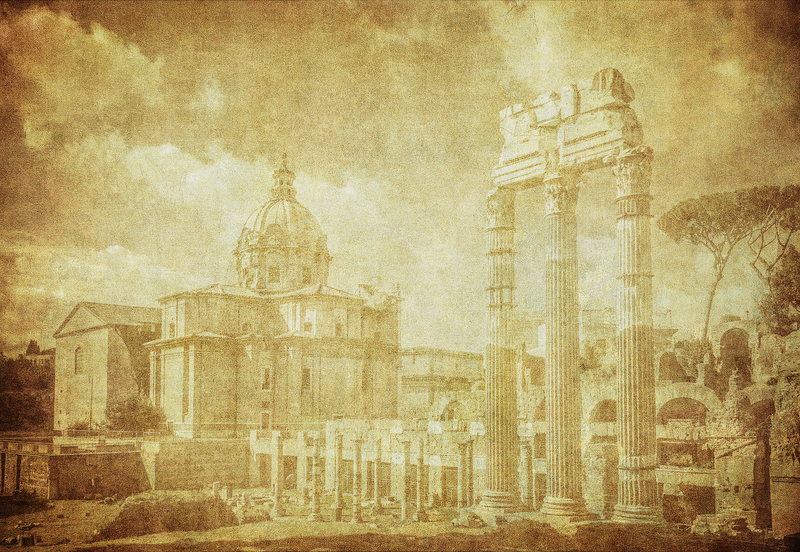Rome’s Nativity. April 21st in the year 753 B.C. The legend tells of a founding at the hands of Romulus and Remus, sons of Rhea Silvia and Mars, belonging to the dynasty of Alba Longa, founded by Ascanio son of Aeneas, who left them in a basket at the mercy of the Tiber, where they were found and cared for by a she-wolf.
These are the mythical origins, but according to modern studies, archaeological and historical Rome was not founded by a single act of the will, but by the progressive coming together of scattered small towns, even if we still like to think of Romulus who traces the sacred groove on the Palatine hill. Even the date is controversial: 753 B.C. is the year set by Latin historian Varro on the basis of calculations carried out by the astrologer Lucio Taruzio.
The holiday, forgotten after the fall of the Roman Empire, took on new life and importance with the Risorgimento. It was the ephemeral Roman Republic of 1849 that restored the event, specifically the Mazziniani e Garibaldini, (i.e. Giuseppe Mazzini and Giuseppe Garibaldi’s followers), in the fight against the temporal power of the papacy.
Celebrated as the National Feast during the fascist era, this event was abolished in 1945, and later restored solely among Rome’s comune. With 2766 lost birthdays, the aches and the pains of the aging process are certainly not lacking. Nevertheless, the holiday retains a charm between history and folklore, and makes for a nice walk through Italian history.
It’s not about rediscovering an ever-present identity, but about taking an opportunity to increase knowledge and deepen awareness beyond folk events. This opportunity is offered to us by a historical journey which begins on April 22nd, thanks to the project Foro di Augusto, 2000 anni dopo (Forum of Augustus, 2000 years later) conceived and edited by Piero Angela and Paco Lanciano in collaboration with Gaetano Capasso. A project of great international appeal within the framework of the celebrations for the two thousandth anniversary of the death of Augustus (August 19, 14 A.D.).
The Forum of Augustus is one of the Imperial Fora of Rome. The historian Suetonius ascribes its construction to “both the multitude of people and number of processes [to which] the two existing fora [the Roman and the Caesar] were no longer sufficient …” The Augustus Forum heralded the urban reorganization of the capital, a testimony to the new political course inaugurated by Octavian Augustus: the imperial age.
The project of Rome’s comune faithfully reconstructs the key places in this history, trying to get the remaining stones, fragments, and columns to “talk” as much as possible. It is a virtual reconstruction of historical precision and scientific research, using special effects to recreate places as they were at the time of Augustus.
A porticoed square, where on the short side, resting to the highest perimeter wall, stood the temple dedicated to Marte Ultore (Vendicatore), surrounded by eight columns on the front and on both sides. Behind the arcades, wide exedras opened up, semicircular spaces covered, separated by a diaphragm of columns.
The square in the center in which a colossal sculpture was paying homage to Augustus on triumphal quadriga, was not only witness to the greatness of the emperor, but also of judicial activities held in the portico, while in the temple were conducted the meetings of the Senate.
Additionally, in its interior were guarded the insignia of the legions lost in war and subsequently recovered, such as those lost by Quinto Publio Varo against the Germans, in the battle of the Teutoburg forest. The foro had to be abandoned before the adjacent imperial complex, so that in the VI century A.D. it was already in the process of demolition. In the IX century, the church of San Basilio was built on the podium of the ancient temple.
An enchanting reconstruction that isn’t missing out on rigorous scientifically and historically details where anyone can savor sound, images, animation, and much more with the narration of Piero Angela in six different languages that will facilitate the outstanding learning experience – yet highly entertaining – of the Temple dedicated to Mars the Avenger, constructed by Augustus to honor the memory of his great uncle Julius Caesar, after his assassination.
From April 22nd to October 21st of this year, every evening from 9pm, for 40 minutes, it’s possible to travel back in time, without a time machine.





























